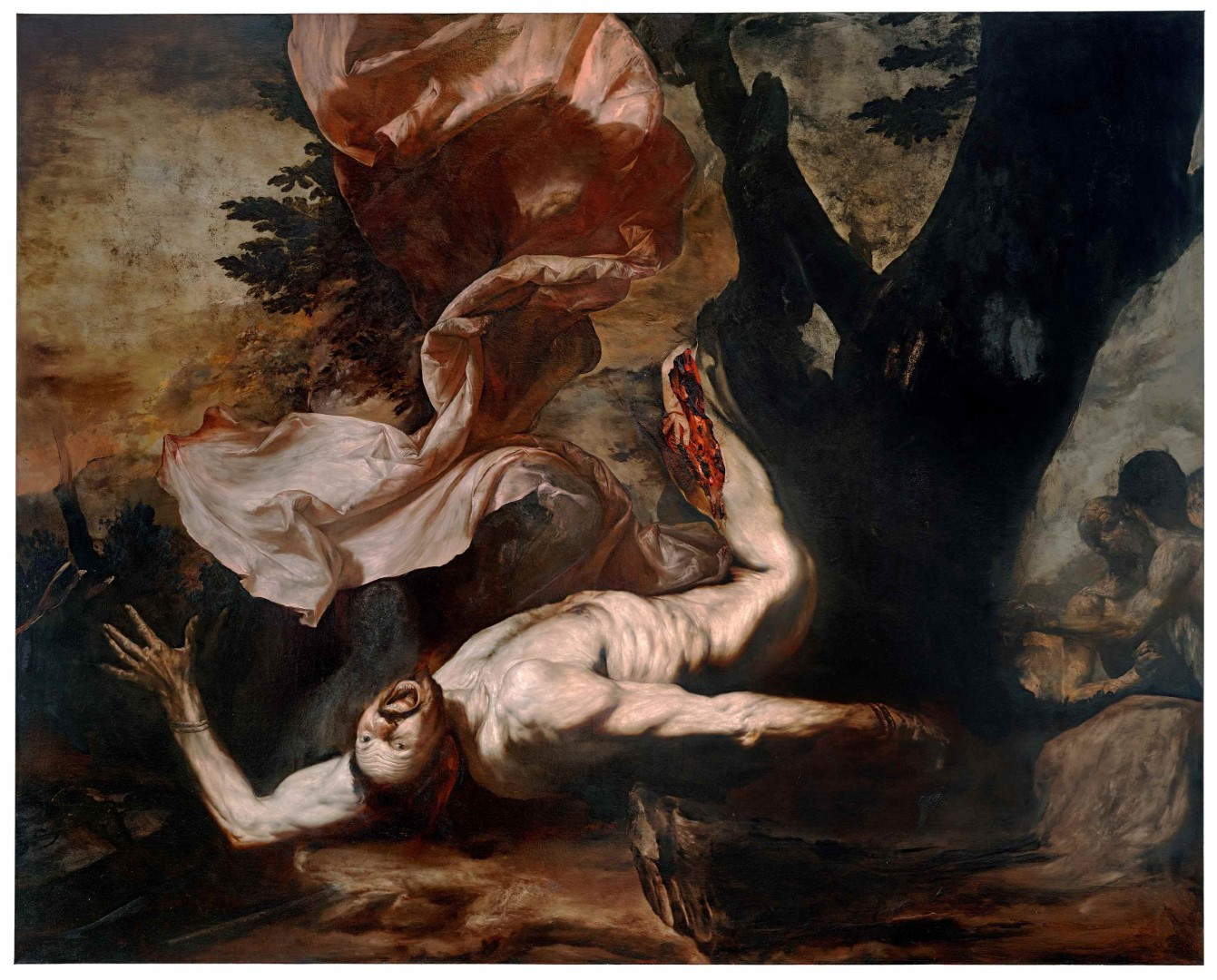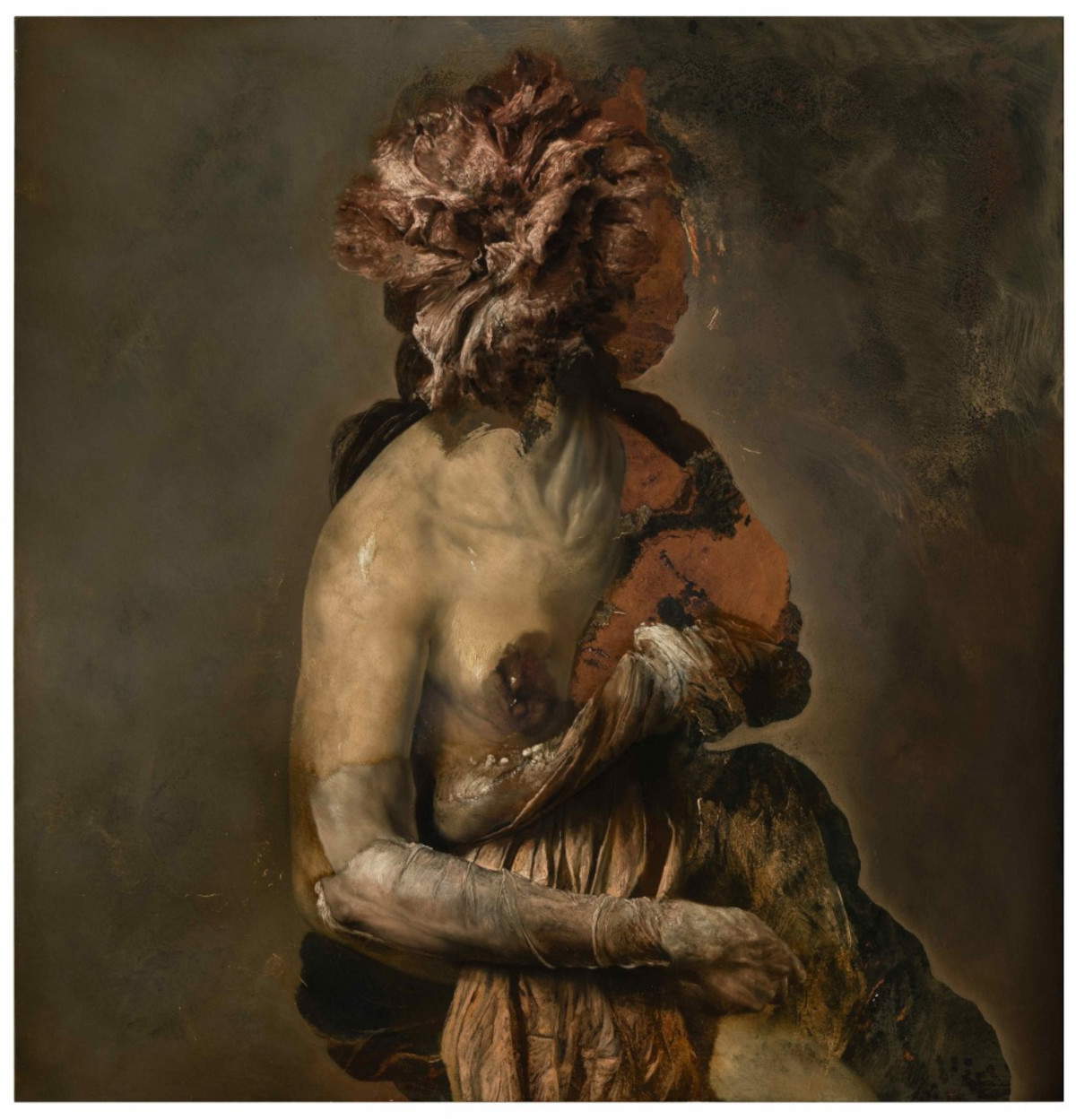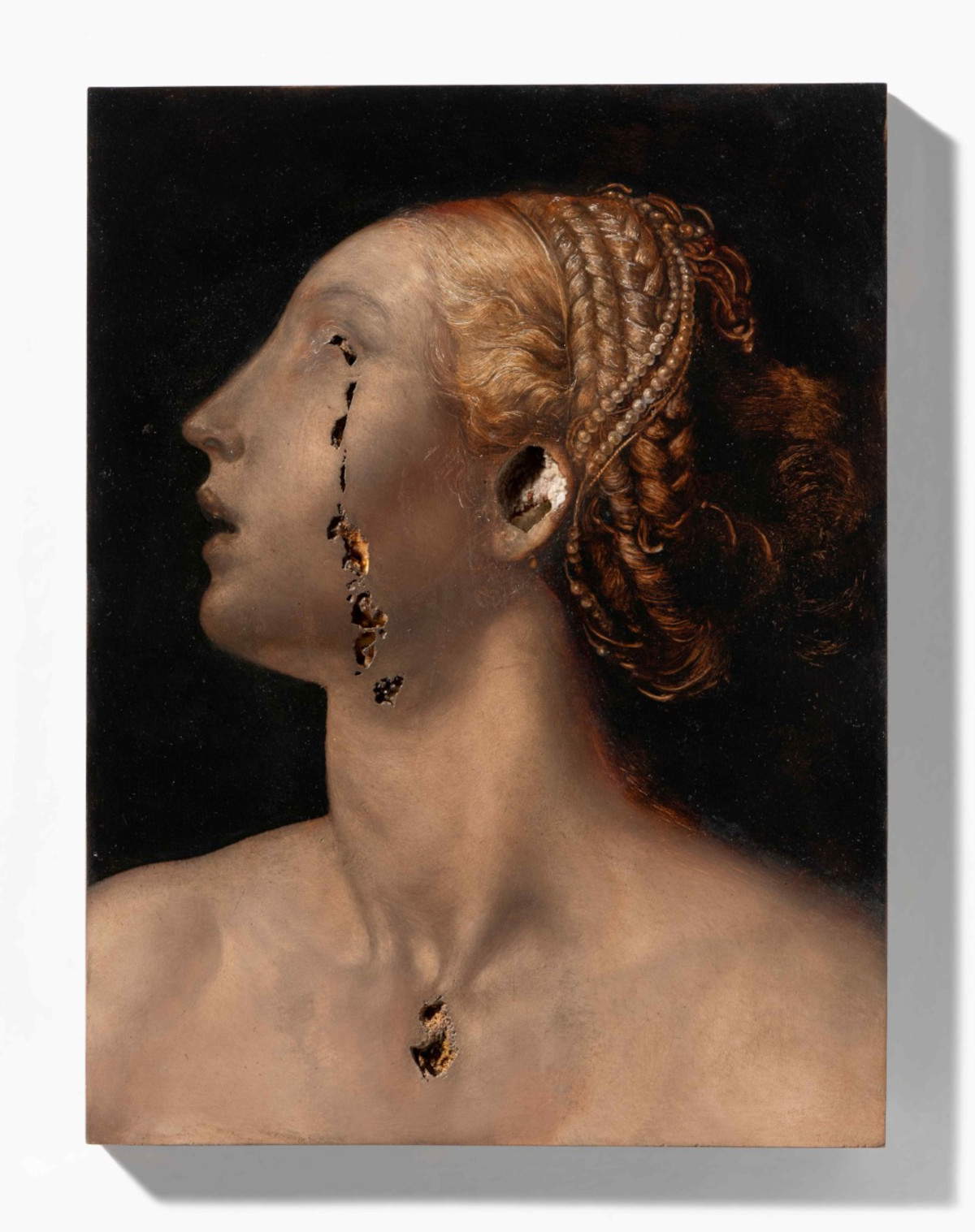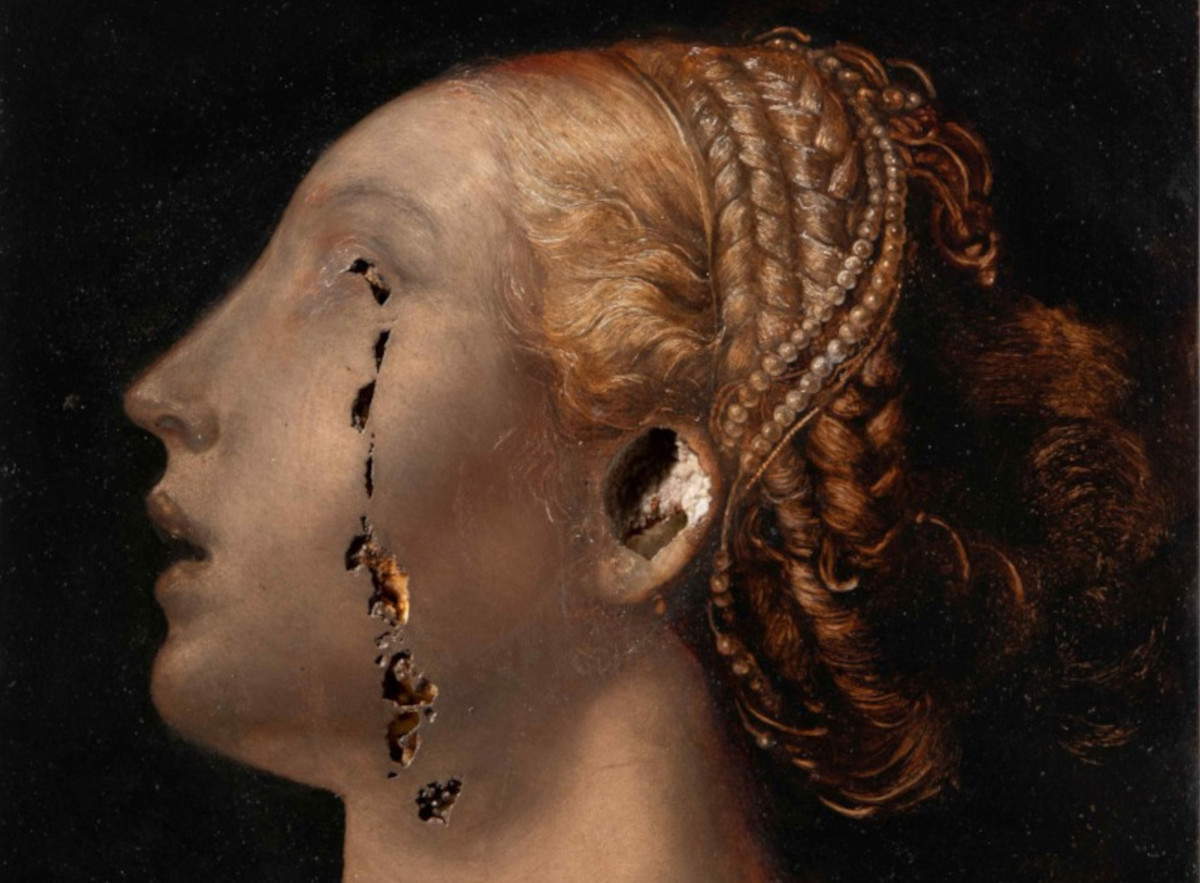The Pinacoteca Ambrosiana in Milan and the Museo e Real Bosco di Capodimonte in Naples: two cities and two museum institutions meet in a single shared project, Classical Collapse, by artist Nicola Samorì. This is not the classic “double exhibition” formula, but a single cultural operation, conceived from the beginning to develop in two separate venues, yet placed in dialogue with each other.
The exhibition, curated by Demetrio Paparoni together with Alberto Rocca (Director of the Pinacoteca Ambrosiana) and Eike Schmidt (Director of the Museo e Real Bosco di Capodimonte), will run from November 28, 2025 to January 13, 2026 in Milan, and from November 29, 2025 to March 1, 2026 in Naples.
The large solo exhibition dedicated to Samorì symbolically unites North and South, staging a set of contrasts intended to invite reflection on both the meaning of art and the human experience: matter and illusion, silence and rhythm, creation and ruin, presence and memory, absence and future, body and spirit. Capodimonte, in particular, celebrates the reopening of its restored rooms with this exhibition. The two institutions thus become complementary poles of Italian artistic history, hosting a shared reflection on tradition, its vitality and the possibility of bringing it into tension with the contemporary gaze.
Through more than fifty works by Samorì, juxtaposed with masterpieces chosen from the permanent collections of the two museums, Classical Collapse aims to create a close confrontation between art history and its rewritings. At the center, the theme of classical art and its continuous metamorphosis, in a single project albeit articulated in two separate venues.

At the Pinacoteca Ambrosiana, the centerpiece will be an imposing painting created especially by Samorì (500 x 1000 cm), placed next to the famous preparatory cartoon for Raphael’s The School of Athens. The exhibition will continue in the Biblioteca Ambrosiana, in the corridor with the funeral monument to Gaston de Foix by Bambaia and in the Crypt.
In the rooms of the Library, the artist will develop the theme of vanitas with still lifes painted on marble and copper, inspired by the flower vases of Jan Brueghel the Elder and Leonardo’s drawings contained in the Codex Atlanticus. The common thread of cataloging and selection unites these works, creating a surprising dialogue between Brueghel’s Vase of Flowers with Jewel and Shells and The School of Athens: two universes constructed by juxtaposition of elements, floral or human, brought together in the same space while belonging to different times.
An entire section will be devoted to Renaissance sculptor Agostino Busti, known as Bambaia. In fact, his high reliefs preserved at the Ambrosiana represent the natural root of Samorì’s “emptied marbles,” just as they were a source of inspiration for the hollowed-out bodies of Adolfo Wildt, in turn the guide for Fontana’s gashes, a fundamental artist for Samorì’s pictorial language.
The Crypt of the Holy Sepulcher, on the other hand, will host vertical wooden sculptures, sacred images that intertwine with the dense weave of marble columns that mark the Romanesque space.
At Capodimonte, the exhibition itinerary will take the form of a complex and layered setting: nearly forty works by Samorì will dialogue with paintings by Bruegel, Pontormo, Parmigianino, Ribera and El Greco from the museum’s collection. In the Sala Causa, the works will be placed within architectural wings that will guide the visitor through a progression of lights and colors: from the very light tones that introduce Sebastiano del Piombo’s Madonna of the Veil, to the total darkness that envelops Bruegel’s Parable of the Blind and its reinterpretation by Samorì (200 x 500 cm), realized with a game of superimpositions and subtractions also developed through artificial intelligence tools.
The beating heart of the project, however, lies in the Neapolitan Baroque. Skin - understood both as a pictorial surface and as a metaphor for the body - becomes the protagonist in an itinerary that ranges from the Flaying of Marsyas (in versions by José de Ribera and Luca Giordano) to Parmigianino’sAntea, to contemporary reinterpretations in which Samorì flays the painting itself, exposing its innards.
For the occasion, a catalog of more than three hundred pages will be published, with essays by the curators, along with contributions by writer Antonio Moresco and theologian and art critic Friedhelm Mennekes.

“Samorì confronts the Western visual tradition through a process of excavation and rewriting,” says Demetrio Paparoni. “These do not replace the artist’s gesture, but amplify it. His work, in addition to its formal layout, attracts for its conceptual depth, which transforms each act of rewriting into a challenge that destabilizes the apparent immutability of the classical. At a time when tradition risks being reduced to a consolatory surface or, conversely, rejected as an obsolete form, Classical Collapse proposes a radical alternative: heritage as a field of tension, a site of productive conflict, a critical space for training the gaze.”
“With conviction we propose, in the centuries-old spaces of the Pinacoteca Ambrosiana, the exhibition of Nicola Samorì, an artist who dialogues with the masters of the past through powerful and disturbing works,” says Alberto Rocca. “In an interweaving of beauty and laceration, his visions - scars and wounds that are excavations in the human body, confront the Renaissance and Baroque heritage of our collection. An encounter that renews the Ambrosiana’s vocation: to preserve memory and inspire the present.”
“Nicola Samorì’s major solo exhibition in the two venues of Naples and Milan symbolically unites the South and the North of Italy,” says Eike Schmidt. “The works exhibited propose a series of antinomies, inviting the viewer to meditate on the essence of visual art and at the same time on human existence: from the antithesis between matter and illusion, silence and rhythm, creation and ruin, presence and past, absence and future, body and spirit. The Capodimonte Museum is proud to reopen its fully restored exhibition halls with this important event.”

 |
| In Milan and Naples a major exhibition by Nicola Samorì, in a confrontation between art history and its rewritings |
Warning: the translation into English of the original Italian article was created using automatic tools. We undertake to review all articles, but we do not guarantee the total absence of inaccuracies in the translation due to the program. You can find the original by clicking on the ITA button. If you find any mistake,please contact us.